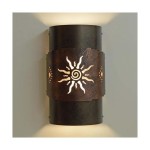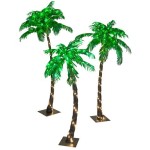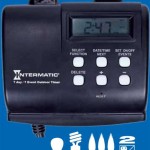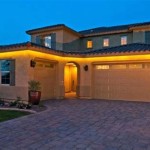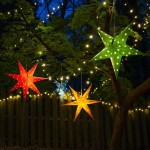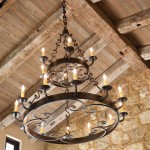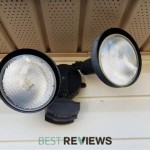```html
Enhancing Outdoor Safety with Effective Lighting
Outdoor safety lighting plays a crucial role in preventing accidents, deterring crime, and improving overall visibility around residential, commercial, and public spaces. Choosing and implementing the right outdoor lighting solutions requires careful consideration of various factors, including light intensity, type of fixture, placement, and energy efficiency. The purpose of this exposition is to provide a comprehensive overview of outdoor safety lighting, focusing on its importance, key considerations, and best practices.
The Importance of Outdoor Safety Lighting
Effective outdoor lighting significantly contributes to a safer environment. Poorly lit areas create opportunities for accidents, such as slips, trips, and falls, especially during nighttime hours or in inclement weather. By illuminating pathways, steps, and other potential hazards, outdoor safety lighting minimizes the risk of injury for residents, employees, and visitors. Furthermore, well-lit areas deter criminal activity. Intruders are less likely to target properties that are brightly lit, as the increased visibility makes them more easily detectable. Properly designed lighting systems can enhance surveillance capabilities, making it easier to identify and apprehend suspicious individuals. Beyond security and safety, outdoor lighting enhances the aesthetic appeal of a property. Strategically placed lights can highlight architectural features, landscaping, and other visual elements, creating a welcoming and attractive atmosphere. Well-designed lighting can also extend the usability of outdoor spaces, allowing people to enjoy patios, decks, and gardens after dark.
The types of environments that benefit from outdoor safety lighting are diverse. Residential properties need lighting for driveways, walkways, entrances, and backyards. This ensures safe passage for residents and guests while discouraging potential intruders. Commercial properties such as office buildings, retail stores, and restaurants require comprehensive outdoor lighting systems to protect employees, customers, and assets. Parking lots, loading docks, and entrances should be well-lit to prevent accidents and deter crime. Public spaces, including parks, sidewalks, and plazas, need adequate lighting to ensure the safety and enjoyment of users. Well-lit public spaces encourage pedestrian traffic and promote community engagement, especially during evening hours.
The consequences of inadequate outdoor lighting can be significant. Increased risk of accidents and injuries is a primary concern. Poorly lit steps, uneven surfaces, and hidden obstacles can lead to falls and other accidents, resulting in physical harm and potential legal liability. Elevated crime rates are also associated with inadequate lighting. Dark areas provide cover for criminals, making it easier for them to commit theft, vandalism, and other offenses. Diminished property value can result from poorly lit exteriors. Potential buyers or renters may be deterred by a property that appears unsafe or uninviting due to insufficient lighting. A negative impact on community perception can also occur. A lack of adequate lighting in public spaces can create a sense of unease and discourage people from using those areas, leading to a decline in community engagement.
Key Considerations for Selecting Outdoor Safety Lighting
Several factors should be taken into account when selecting outdoor safety lighting. Light intensity, measured in lumens, determines the brightness of the light. The appropriate light intensity depends on the specific application and the size of the area being illuminated. Walkways and entrances typically require lower light levels than parking lots or security perimeters. Light distribution refers to the pattern in which light is spread across an area. Different lighting fixtures produce different light distribution patterns. Floodlights provide a wide, even distribution of light, while spotlights focus light on a specific area. Area lights are designed to illuminate large open spaces, such as parking lots or sports fields. The color temperature of light, measured in Kelvin (K), affects the appearance and feel of the illuminated area. Warmer colors (lower Kelvin values) create a cozy and inviting atmosphere, while cooler colors (higher Kelvin values) provide brighter and more focused illumination. For safety purposes, cooler colors are often preferred, as they enhance visibility and alertness.
Various types of lighting fixtures are available for outdoor safety applications. LED lights are the most energy-efficient option, offering long lifespan and low maintenance requirements. They are available in a wide range of intensities, colors, and styles. Halogen lights are brighter than incandescent lights but less energy-efficient than LEDs. They are often used for security lighting applications. High-pressure sodium (HPS) lights are highly efficient and produce a yellowish light. They are commonly used for street lighting and large area illumination. Metal halide lights produce a bright, white light and are often used for sports fields and parking lots. However, they are less energy-efficient than LEDs.
Energy efficiency is a crucial consideration for outdoor safety lighting. LED lights offer significantly lower energy consumption compared to traditional lighting technologies, resulting in lower electricity bills and reduced environmental impact. Motion sensors can be used to activate lights only when needed, further reducing energy consumption. Timer switches can be used to automatically turn lights on and off at preset times, ensuring that lights are only on during hours of darkness. Solar-powered lights are an environmentally friendly option that eliminates the need for electrical wiring. They are ideal for remote locations or areas where access to electricity is limited. Durability and weather resistance are essential qualities for outdoor lighting fixtures. Fixtures should be made of durable materials that can withstand exposure to the elements, including rain, snow, wind, and extreme temperatures. Look for fixtures that are rated for outdoor use and have a high Ingress Protection (IP) rating, which indicates the level of protection against water and dust.
Best Practices for Implementing Outdoor Safety Lighting
Proper placement of outdoor lighting fixtures is essential for maximizing effectiveness. Light fixtures should be positioned to eliminate shadows and dark spots, ensuring consistent illumination across the area. Entrances and walkways should be well-lit to provide safe passage and deter intruders. Security perimeters should be illuminated to detect unauthorized access. Consider the angles of light to avoid glare and light trespass, which can be annoying to neighbors and reduce visibility. Regular maintenance is necessary to ensure the continued effectiveness of outdoor safety lighting. Bulbs should be replaced promptly when they burn out. Fixtures should be cleaned regularly to remove dirt and debris that can reduce light output. Wiring and connections should be inspected periodically for damage or corrosion. Landscaping should be trimmed to prevent it from blocking light fixtures or creating shaded areas. Professional installation is recommended for complex lighting systems. A qualified electrician can ensure that the lighting system is installed safely and correctly, complying with all applicable codes and regulations. A professional lighting designer can help to create a lighting plan that meets the specific needs of the property, taking into account factors such as light intensity, distribution, and color temperature. Integration with security systems can enhance the effectiveness of outdoor safety lighting. Motion sensors can be integrated with security cameras to trigger recording when motion is detected. Lighting systems can be integrated with alarm systems to alert authorities in the event of a security breach.
Compliance with local codes and regulations is essential when installing outdoor safety lighting. Many municipalities have specific requirements for outdoor lighting, including restrictions on light intensity, glare, and light trespass. Before installing any outdoor lighting, it is important to check with the local authorities to ensure compliance with all applicable codes and regulations. Dark Sky compliance is an increasingly important consideration for outdoor lighting. Dark Sky initiatives aim to reduce light pollution and preserve the natural beauty of the night sky. To comply with Dark Sky principles, lighting fixtures should be shielded to direct light downwards, minimizing upward light pollution. Light intensity should be kept to the minimum necessary for safety and functionality. Color temperature should be kept below 3000K to reduce blue light emissions, which can disrupt circadian rhythms and harm wildlife. Investing in high-quality outdoor lighting fixtures is a worthwhile investment in the long term. High-quality fixtures are made of durable materials, are energy-efficient, and provide consistent performance. They also typically come with longer warranties, providing peace of mind.
```
The Best Led Outdoor Security Lights For 2024 Super Bright Leds

The Diffe Kinds Of Outdoor Security Lights

The Best Outdoor Security Lights Safewise

How To Buy Outdoor Security Lights For Your Garden Saga

Security Lighting Safety Outdoor Delmarfans Com

The Ultimate Guide To Choosing Best Outdoor Security Lights

Outdoor Security Lighting Commercial Led Lights Straits

Commercial Security Lighting A Complete Guide

28w Outdoor Security Lights With Motion Sensor And Dusk To Dawn Lightdot

Led Security Lights The Ultimate Guide To Home Safety
